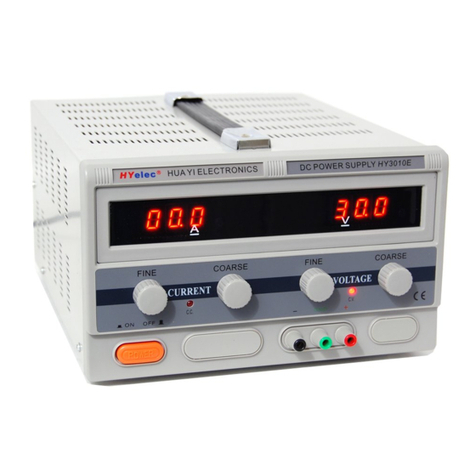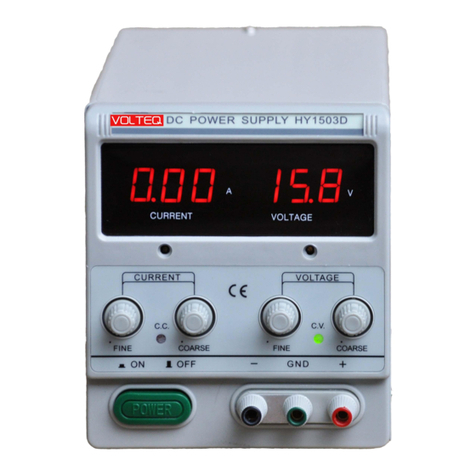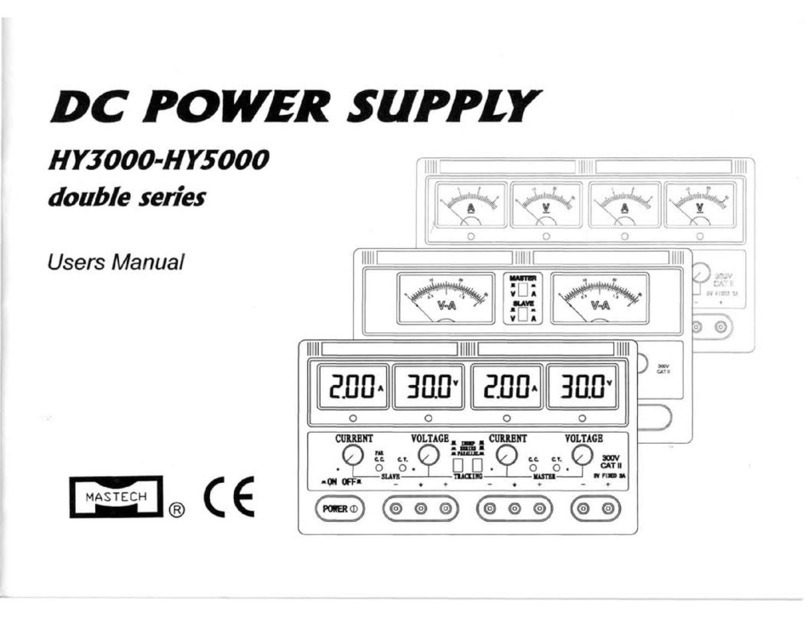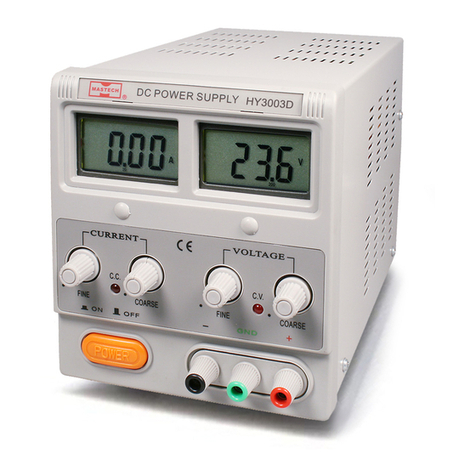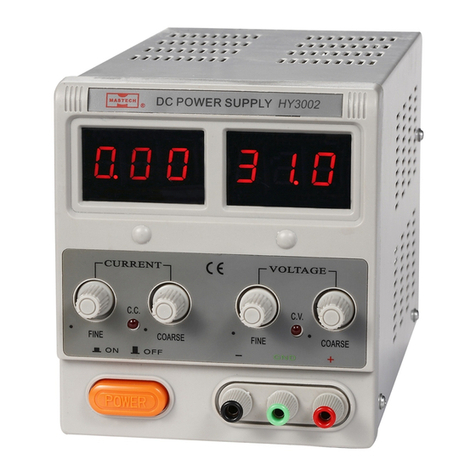
3-2 Constant Voltage / Constant Current Characteristics
The power supply is a regulated constant current / constant voltage (CC CV) power supply, which is
characterized by automatic crossover from constant current (CC) to constant voltage (CV), and vise versa. At any
moment, the power supply automatically determines whether to operate in CV or CC mode, depending on the voltage
and current limit (set by the front knobs), and the load connected (if no load is connected, it simply means that the load
resistance is infinite; conversely, if a short is connected, the load resistance is zero).
Note: The power supply is in CC mode if indicator light 5 is on; it’s in CV mode if indicator light 14 is on.
In order to understand the crossover, it is important to note that the voltage and the current are related by the
Ohm’s law, so only one of the two is an independent variable. The law dictates that the output current I in amps (A) is
always equal to the output voltage V in volts (V) divided by the load resistance R in ohms (Ω):
For example, if the load resistance (R) is such that the current limit (set by knobs 3 and 4) is higher than the
voltage limit (set by knobs 12 and 13) divided by R (i.e., voltage limit is lower than current limit for the load R
connected), the power supply operates in the constant voltage (CV) mode. When in CV mode, the output voltage
remains constant even if the load resistance changes (e.g., if load resistance decreases, the current increases), up to the
point when the preset current limit is reached. The crossover point is reached when the voltage and current limit are
reached simultaneously. Beyond the crossover point, the indicator changes from CV to CC, and the current limit







